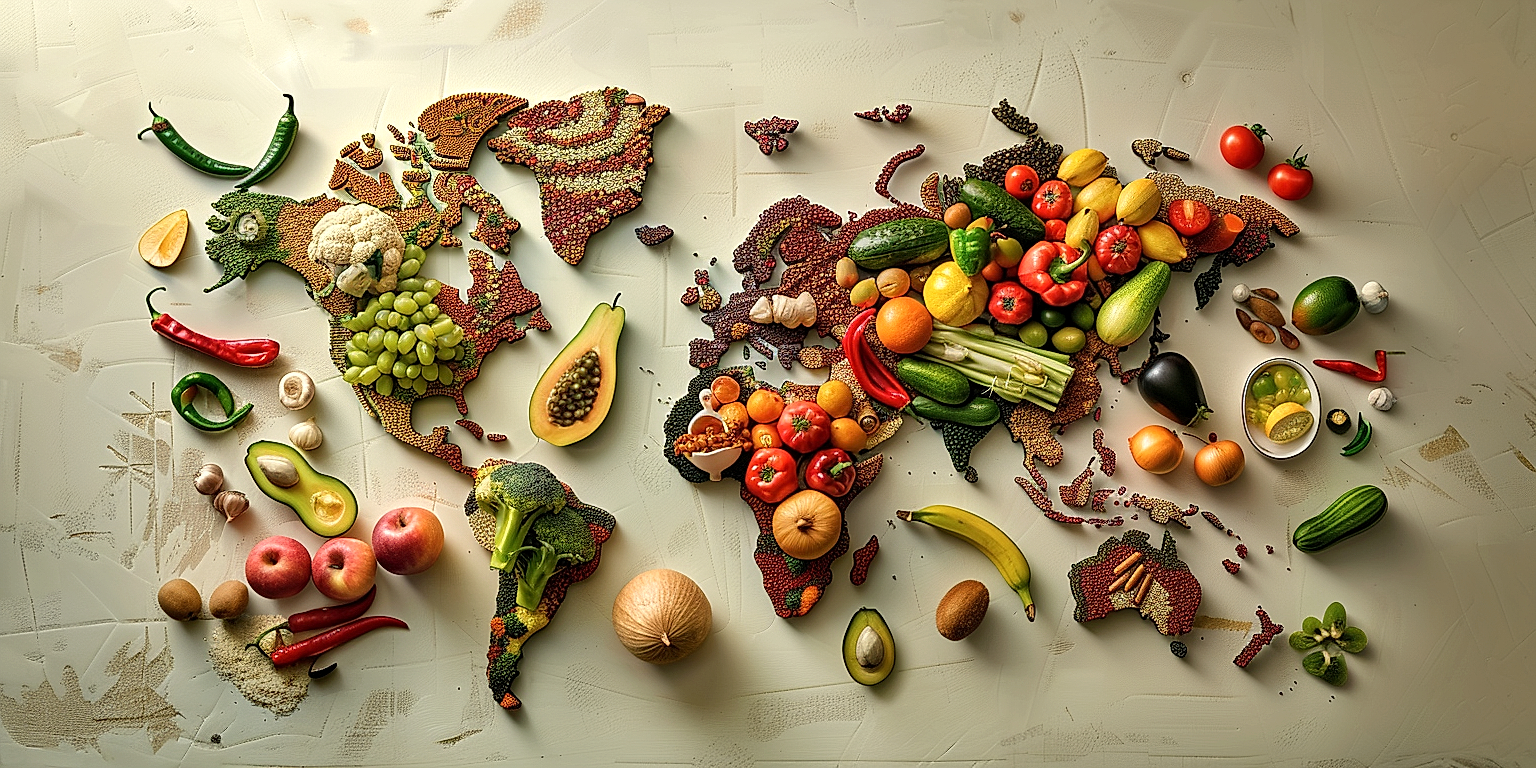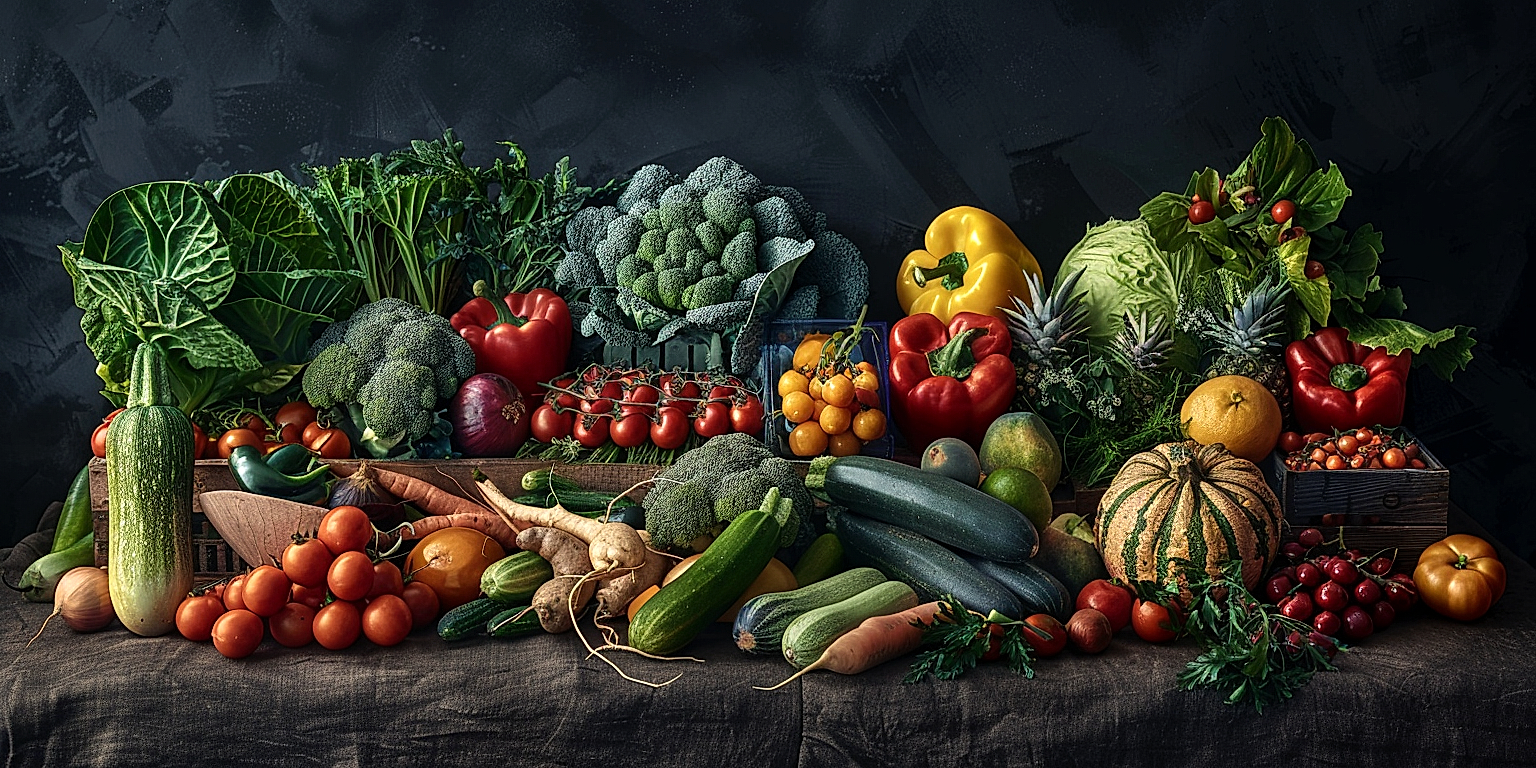The world of processed produce offers an array of lucrative market opportunities.
These potential prospects arise from evolving consumer preferences, technological advancements, and demographic changes.
As the global consumption of processed fruits and vegetables continually climbs, it behooves manufacturers to assess and adapt.
Companies today must navigate market trends and anticipate consumer needs.
This analysis reveals crucial insights into the increasing demands and trend shifts in the sector.
Understanding these dynamics can empower businesses to enhance their product offerings, improve profit margins, and strengthen their foothold in this competitive landscape.
Key Market Opportunities For Processed Produce
1. Increased Demand for Convenient, Ready-to-Eat Foods
Over the last decade, there has been a significant shift in consumer preference towards convenient, ready-to-eat foods.
This shift is largely driven by the fast-paced modern lifestyle which leaves consumers with little to no time for preparing meals from scratch.
Consumers are, therefore, opting for processed produce that are easy to prepare and consume.
Similarly, the increased demand for these foods presents a major market opportunity for processed produce.
This trend of prioritizing convenience over the traditional method of food preparation has led to a surge in the demand for processed foods.
In turn, this has brought about increased opportunities for food processing companies to expand their product portfolio.
Ready-to-eat processed produce not only cater to the need for convenience, but also offer a variety of choices to the consumers.
The convenience of processed foods, paired with their variety, is a significant driver for their increased demand.
Therefore, companies that are able to provide a range of convenient and diverse processed products stand to gain greater market share.
With this ongoing consumer preference, there’s a ripe opportunity for processed produce companies to create innovative offerings that deliver convenience without compromising on taste or nutrition.
Notably, the shift towards convenience foods is not just confined to developed markets, but is also manifesting in emerging markets.
The infiltration of Western life styles and the subsequent increase in disposable income in these markets has resulted in a growing preference for ready-to-eat meals, thereby driving demand for processed foods.
As a response to this trend, processed food companies have been expanding their operations across these markets, further capitalizing on this opportunity.
Furthermore, ready-to-eat meals are also sought-after by consumers on account of their longer shelf life, compared to fresh produce.
This reduces food wastage and allows for more efficient inventory management in retail stores, which further increases the appeal of processed foods among retailers and consumers alike.
It is evident that the increased demand for convenient, ready-to-eat foods presents a massive opportunity for the growth of the processed produce market.
2. Rise in Global Vegan and Vegetarian Population
The global market for processed produce is experiencing significant growth, and a primary contributing factor to this expansion is the rise in the global vegan and vegetarian population.
People all over the world are increasingly opting for healthier and more sustainable dietary choices, recognizing the environmental and health benefits associated with reducing or eliminating animal products from their diet.
This involves embracing a diet rich in fruits and vegetables, which in turn is driving demand for convenient, processed plant-based foods that can easily fit into a busy lifestyle.
In the last decade, there has been a widespread acceptance and implementation of vegan and vegetarian diets across countries such as the United States, United Kingdom, Australia, Germany, and India, among others.
This upsurge isn’t solely confined to these nations; other regions like Latin America and Southeast Asia are discovering the advantages of plant-based diets, further contributing to the surge in demand for processed produce.
As a result of such dietary shifts, companies in the food processing industry have found themselves with new opportunities to innovate and expand their product ranges with a focus on plant-based items. This has stretched the potential of the processed produce market significantly.
Market reports suggest that since 2014, there has been a dramatic increase in the number of products labeled as “vegan” appearing on supermarket shelves, reflecting the growing demand for these items.
Consequently, the processed foods industry needs to keep pace with these preferences, catering to this escalating demand by experimenting with and introducing new and exciting plant-based products.
The increasing reliance on plant-based products also presents opportunities for the market in terms of product innovations involving various processing techniques, flavors, and textures that cater to specific dietary preferences.
Also, factors such as the rise of flexitarianism – a semi-vegetarian diet that emphasizes plant-based foods while allowing for occasional animal products – have extended the reach of the processed produce market..
The global shift towards plant-based diets is also linked to the growing health-consciousness among consumers seeking nutritiously processed foods and ready-to-eat produce.
This information demonstrates the vast potential that exists for the processed produce market, provided businesses can keep up with the demands and trends driven by the global rise in veganism and vegetarianism.
Last but not least, as concerns over climate change and the promotion of sustainable food choices continue to resonate with the mass, the influence of the vegan and vegetarian population on the processed produce market is likely to persist.
3. Health-conscious consumers seeking nutritiously processed foods
The health-conscious consumer’s scope is evolving beyond the typical fresh, natural, or organic labels and is venturing into the realm of processed produce.
In response to these changing preferences, food manufacturers are seeking ways to provide convenient, ready-to-eat foods that are not only packed with flavour but also rich in essential nutrients.
Among the primary drivers behind this demand include the escalating awareness of the link between diet and health, the rise in non-communicable diseases such as diabetes and obesity, and the general push towards healthier lifestyles.
This presents a significant market opportunity for processed produce, particularly those that can provide consumers with convenient yet nutritionally balanced food options.
The industry has witnessed an increasing interest in plant-based foods, fuelled by a growing number of consumers adopting vegan, vegetarian, or flexitarian lifestyles.
Processed produce can be designed to cater to this demographic, with options such as pre-packaged salads, canned legumes, or frozen fruits and vegetables.
This category of health-focused processed foods also includes items such as juiced, pureed, or pulped fruits and vegetables, dried fruits, and even packaged herbs and spices.
It is crucial for manufacturers to ensure that these products not only meet nutritional requirements but also taste good, have a decent shelf-life, and are conveniently packaged for easy consumption.
The industry must invest in innovative food processing and preservation technologies to increase the nutritional value and shelf life of these products without compromising their taste or quality.
For instance, High-Pressure Processing (HPP) and Modified Atmosphere Packaging (MAP) are two techniques currently utilized to preserve the freshness and nutritional value of processed foods.
Furthermore, proactive collaboration with nutritionists, dietitians, and food scientists can help manufacturers develop foods that are labelled ‘better-for-you’, thereby attracting health-conscious consumers.
These trends indicate a paradigm shift in processed foods from being perceived solely as ‘convenience foods’ to being seen as health-enriching commodities.
As more consumers pivot towards nutritiously processed foods, opportunities for manufacturers within the processed produce industry are ripe for the picking.
By meeting this need for healthful, convenient foods, brands can not only bolster their market presence but also contribute to the overall wellness of their consumers.
As the sector grows, businesses that can most effectively infuse health and convenience into their processed produce offerings will likely be the ones to capture the largest market share.
4. Expansion in emerging markets like Asia, Africa
One major market opportunity for processed produce lies in the expansion into emerging markets notably Asia and Africa.
These markets, with their growing middle classes, are experiencing a surge in demand for high-quality, ready-to-eat food products.
The shift in dietary habits and lifestyle changes in these regions contribute to a growing appetite for processed foods.
Greater connectivity and urbanization in these regions have given rise to a new consumer class that prioritizes convenience and variety.
This demographic transition presents a lucrative market opportunity for processed food producers.
The growing middle class of these emerging economies is showing a strong preference for branded and high-quality processed food, making these markets ripe for expansion.
Many rising economies in Asia and Africa are witnessing an increased investment in retail and distribution networks, providing further opportunities for growth.
For instance, the advent of online grocery delivery platforms has fostered a more convenient shopping experience and expanded access to a wider variety of food products.
Additionally, investments in infrastructure are making it easier to transport and market food products in previously hard-to-reach rural areas.
This increased connectivity means that processed food items can reach a wider consumer base.
However, tapping into these markets requires an understanding of the unique consumer preferences and dietary habits in these regions to effectively tailor products to meet local tastes.
This includes developing products that appeal to local taste preferences or incorporating ingredients that are familiar and appealing to the local consumer base.
Furthermore, food processing companies need to comply with the local food safety and quality regulations, which often includes the packaging, content and nutritional labeling requirements.
Moreover, heightening concerns on environmental impact and sustainability are making it imperative for processed food companies to demonstrate their commitment to sustainable practices.
As such, not only can processed food players find new avenues for growth in the mature markets, but they can also tap into the rising opportunities in these vibrant and rapidly evolving emerging markets.
5. Innovation in Food Processing and Preservation Technology
The global market for processed produce has been rapidly evolving due to the rise in innovation pertaining to food processing and preservation technology.
With the aid of innovative food processing technology, processed produce can maintain more of its original nutritional properties and flavor.
Advancements in preservation technology has opened up possibilities for longer product shelf life, minimizing wastage and maximizing availability.
By leveraging emerging technologies, the processed produce sector has been able to significantly enhance food safety, keeping products fresher and safer for longer periods of time.
New technologies such as High Pressure Processing (HPP) and Pulsed Electric Fields (PEF) are revolutionizing the field by effectively killing bacteria while retaining the nutritional value of the produce.
Innovation has also expanded to the packaging of processed produce, with sustainable and smart packaging solutions that keep the foods fresh and attractive while respecting environmental considerations.
With the advent of the Internet of Things (IoT) and artificial intelligence (AI), there’s an emergence of smart factories and intelligent manufacturing systems that can process produce more efficiently and effectively.
These digital technologies are streamlining the entire food processing chain, facilitating traceability, ensuring high standards of hygiene, and significantly reducing the time required to bring a product to market.
The progress in 3D food printing technology is poised to revolutionize the design and production of processed foods with complex textures and tailored nutritional profiles to cater to different demographics and dietary preferences.
The genomics revolution is paving the way for genetically modified (GM) foods that have improved nutritional value, and are resilient to climate change, thereby providing a potential solution to global food security.
The future of food processing will continue to be shaped by technological breakthroughs, such as nanotechnology, that promise to greatly enhance food safety, nutrition and sustainability.
Continued investment in research and development (R&D) is crucial to drive further innovation in the processed produce industry, enabling it to match the growing demands for nutritious, flavor-filled, convenient food.
As consumers adopt healthier diets and increase their awareness of food safety, the demand for innovative processing and preservation technologies is set to rise.
By remaining responsive to consumers’ changing nutritional requirements, demographic shifts, and environmental concerns, the processed produce industry will enhance its potential to captivate expanding markets.
Indeed, innovation in food processing and preservation technology promises a dynamic, sustainable, and prosperous future for the processed produce sector.
The Bottom Line
Lines in length.
The surge in demand for ready-to-eat foods coupled with a rapidly growing vegan and vegetarian population has necessitated the need for more nutritiously processed foods.
Today’s health-conscious consumers prefer not merely palatable but also nutrition-rich food choices.
This paradigm shift in consumer behavior, along with the flourishing markets in Asia and Africa, provides an enormous opportunity for the food industry to expand and innovate.
The innovative strides made in food processing and preservation technology have only added fuel to this transformative fire, enabling the provision of cost-effective, sustainable, and healthier food options to consumers across the globe.
Therefore, it’s evident that the world is moving towards a more mindful yet convenient lifestyle when it comes to dietary choices.




